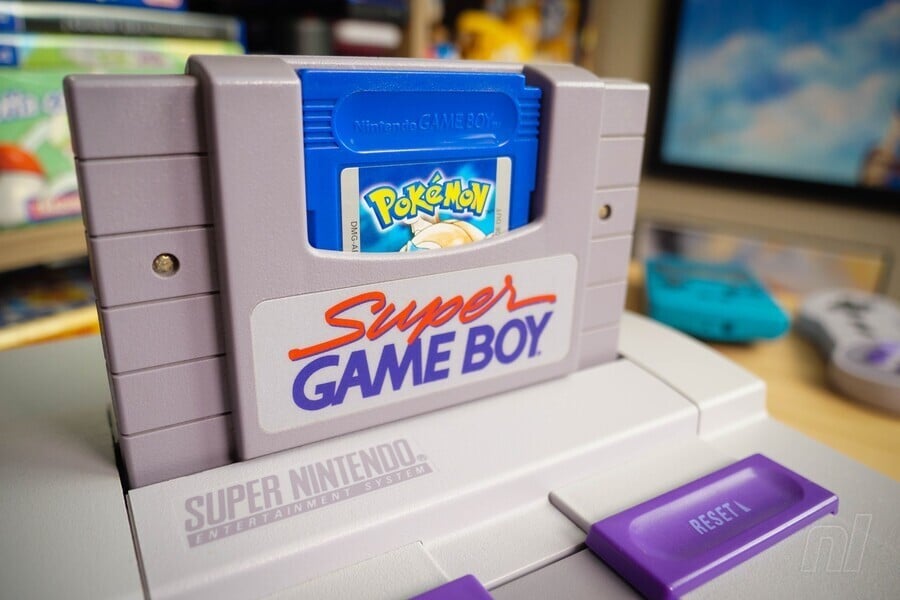
Nintendo’s handheld console upgrades were so common for so long you could practically set your watch by them: the leap from Game Boy to Game Boy Color via the Pocket; the GBA’s evolution from its original battery powered form to the blazing intensity of the Micro’s beautiful screen; the more recent range of DSis, XLs and New!s. And even now those Switch Pro rumours just won’t go away.
What’s often forgotten is all the effort poured into the company's home hardware while this was going on; expanding their capabilities, designing new storage mediums, creating specialised services and releasing exclusive titles that capitalised on the raw power and fresh opportunities lurking within the base console’s shiny new attachment. It was all very impressive with only one slight drawback — most of these accessories never left Japan.
Subscribe to Nintendo Life on YouTube841k
Still, that’s never stopped Nintendo Life, has it? Join us now for a brief tour of Nintendo's home console add-on hardware, courtesy of the company that practically invented the half-step console upgrade.
Famicom Disk System (1986)
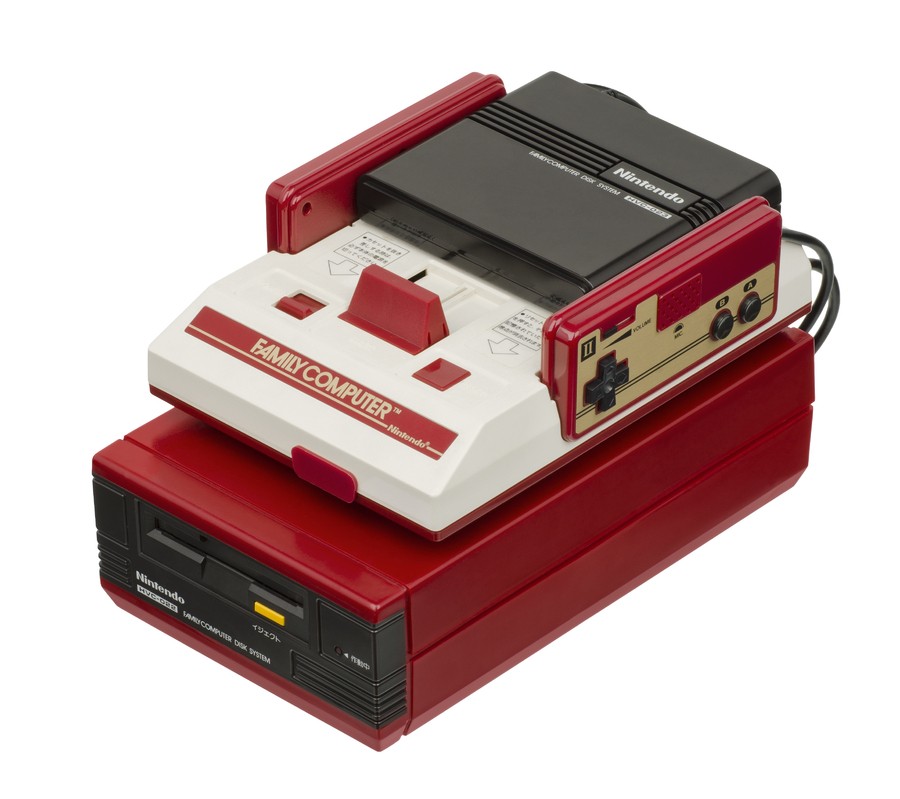
This 1986 expansion is perhaps the most well known of Nintendo's import-only hardware trilogy, adding a super-stylish floppy disc drive underneath the Famicom’s classy white and red shell. The titular discs came not in standard computer style packaging but thick Nintendo-ised cases and were capable of holding a whopping 112KB of rewritable data, allowing players to store their progress directly on the disc itself and saving them from having to laboriously copy lengthy passwords by hand (and saving publishers from having to manufacture expensive cartridges with extra chips and battery powered save slots).
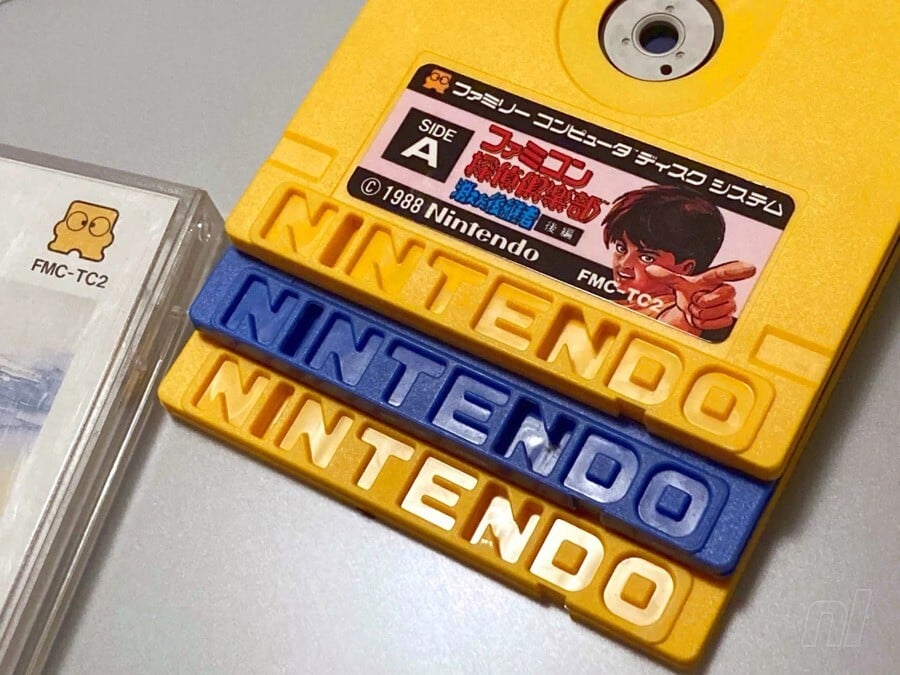
Less immediately obvious than the new storage medium was the additional RAM and extra sound channel the Disk System brought to the Famicom, and what this meant for games created with this add-on in mind. In the '80s, games used to be so small and so densely packed that code had to be shuffled around and programs would literally fall from one line straight into the next, memory at such a premium the instant an enemy was off screen it ceased to exist. It’s a small miracle we ever got any games at all. The Disk System's combination of double-sided disc space and extra RAM gave game designers a little more room to breathe, to think bigger... and to create titles like The Legend of Zelda.
These games would — for the most part — be reworked and re-released later on Famicom/NES cartridges at a time when the cost of manufacturing beefier carts was deemed more reasonable (part of the reason why the Famicom Disk System was never released outside its homeland). Most survived the transition relatively intact, although there's something to be said for the richer soundscape of the FDS and the hardware's innate ability to save your progress. Some might say certain classic games were actually better on the Famicom Disk System.
Notable Famicom Disk System games to consider:
The changes between the disc and cartridge versions of Metroid, Zelda II: The Adventure of Link, Castlevania, etc., as well as the complete do-over Yume Koujou Doki Doki Panic famously received to transform into Super Mario Bros. 2 make those versions worth tracking down for big fans of those early Nintendo classics- Also consider looking at the likes of Konami’s Esper Dream, the Famicom Detective Club games (in preparation for their Switch remakes), and inventive musical shmup Otocky.
Satellaview (1995)
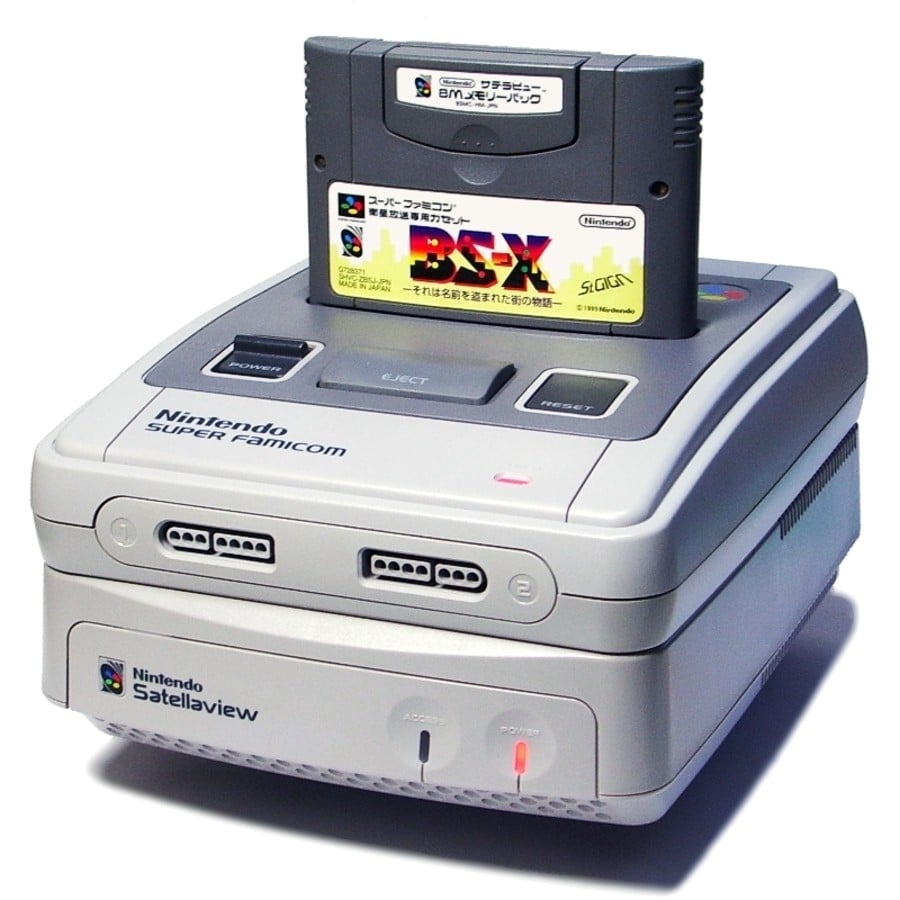
Sandwiching the user’s Super Famicom between a base unit and a unique BS-X cartridge, 1995’s premium-feel Satellaview brought online gaming to Nintendo's 16-bit console, but not quite as we know it today.
In conjunction with St.GIGA, a Japanese satellite radio company, the hardware allowed paying subscribers to download games (either onto the system itself or onto an 8Mb Memory Pak slotted into the required BS-X cartridge), access magazines, news, and enter competitions. Downloaded games could be anything from visually updated Famicom classics and short minigames to true exclusives and full-length RPGs; some were even episodic “SoundLink” releases — a thrilling mix of traditional game data paired with live-streamed audio only available at set hours of the day in a specific time window (reruns were sometimes broadcast at a later date for those that missed them the first time around).
Notable Satellaview games to consider:
Sadly, most of us aren’t going to get to play Satellaview games these days without the help of a search engine and a SNES emulator — and unfortunately the live-streamed audio of the SoundLink titles is presumed lost forever. It’s worth spending a few moments lamenting the loss of Squaresoft’s Chrono Trigger-related adventure Radical Dreamers, BS F-Zero Grand Prix, Kirby’s Toy Box, and BS Fire Emblem.
64DD (1999)

After many years of worldwide speculation and trade show teasing, Nintendo finally released the 64DD for the N64 in 1999. Another under-the-console affair, the online-capable Japan-only accessory utilised pleasantly chunky rewritable discs able to store a massive 64 MB of data and even featured an internal clock, enabling games to potentially alter depending on the time of day.
Unfortunately, for all the time and money spent creating it (not to mention organising the Randnet online service that went with it), this is one import-only add-on that really struggled to justify its existence. A mere ten discs (not even ten games) were officially released for the 64DD, so it’ll be no surprise to learn the system came and went without leaving a mark on the gaming landscape. As many will know, the much talked about “Ura Zelda” expansion of Ocarina of Time didn’t end up on the format at all. The unusual Doshin the Giant is infinitely more accessible on the GameCube, and even if its 64DD expansion disc Kyojin no Doshin: Kaiho Sensen Chibikko Chikko Daishugo somehow turned out to be indisputably the greatest game of all time, it would still be incredibly difficult to justify spending the large sums of money needed to play it.
Notable 64DD games to consider:
The Mario Artist trilogy — Polygon Studio, Paint Studio, and Talent Studio — are a great showcase of the hardware’s potential, allowing users to create their own 3D models, 2D drawings, and animations respectively. The mouthwatering F-Zero X Expansion Kit offers an alternative window into an editable gaming world, working in conjunction with the original F-Zero X cart to enable users to create their own courses, and their own vehicles to use on them, too.
Oh, and SimCity 64. Um, that’s honestly pretty much everything. Sorry.
But what about the West?
The import-only status and slightly ephemeral nature of the three mentioned above may make them irresistible to lovers of the esoteric and committed hoarders of retro (finding readable Famicom Disk System games is only getting toughter with the passing of time), but to focus solely on those Japan-only achievements would mean forgetting that Nintendo’s very best hardware add-ons were available in all territories. Namely, the SNES’ Super Game Boy and the GameCube’s Game Boy Player.
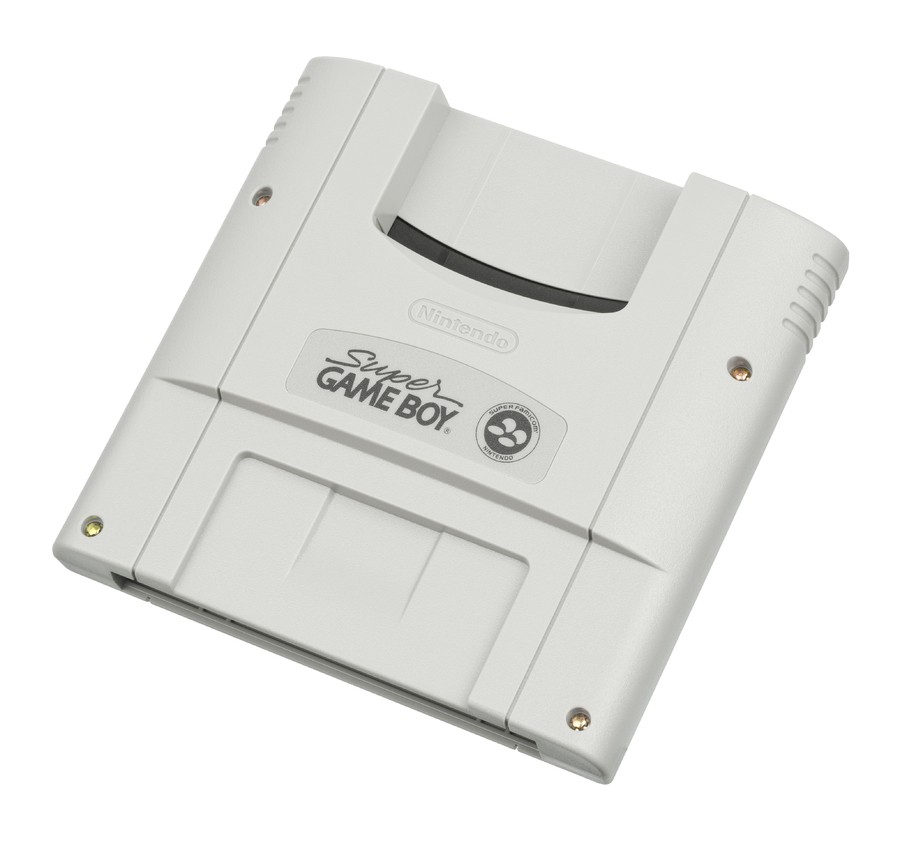
They’re not especially fancy, or rare (although finding a Game Boy Player that comes with the required disc can be an expensive endeavour), and by design they don’t even let you play anything you don’t already own — but they’re perfect.
Thanks to these unassuming devices we got to see Super Mario Land’s tiny sprites freed from the original Game Boy’s smeary screen, play Pokémon as a home console game years before it officially became one, and tense up as Metroid Fusion’s SA-X walked onto a living-room-sized screen. And this is before we even mention the extra features, such as the Super Game Boy’s beautiful title screens, decorative borders, single-screen multiplayer support for Killer Instinct or the Takara-published ports of various SNK fighters. Wario Blast: Featuring Bomberman! and Bomberman GB even went as far as to support multitap multiplayer if played using a Super Game Boy.
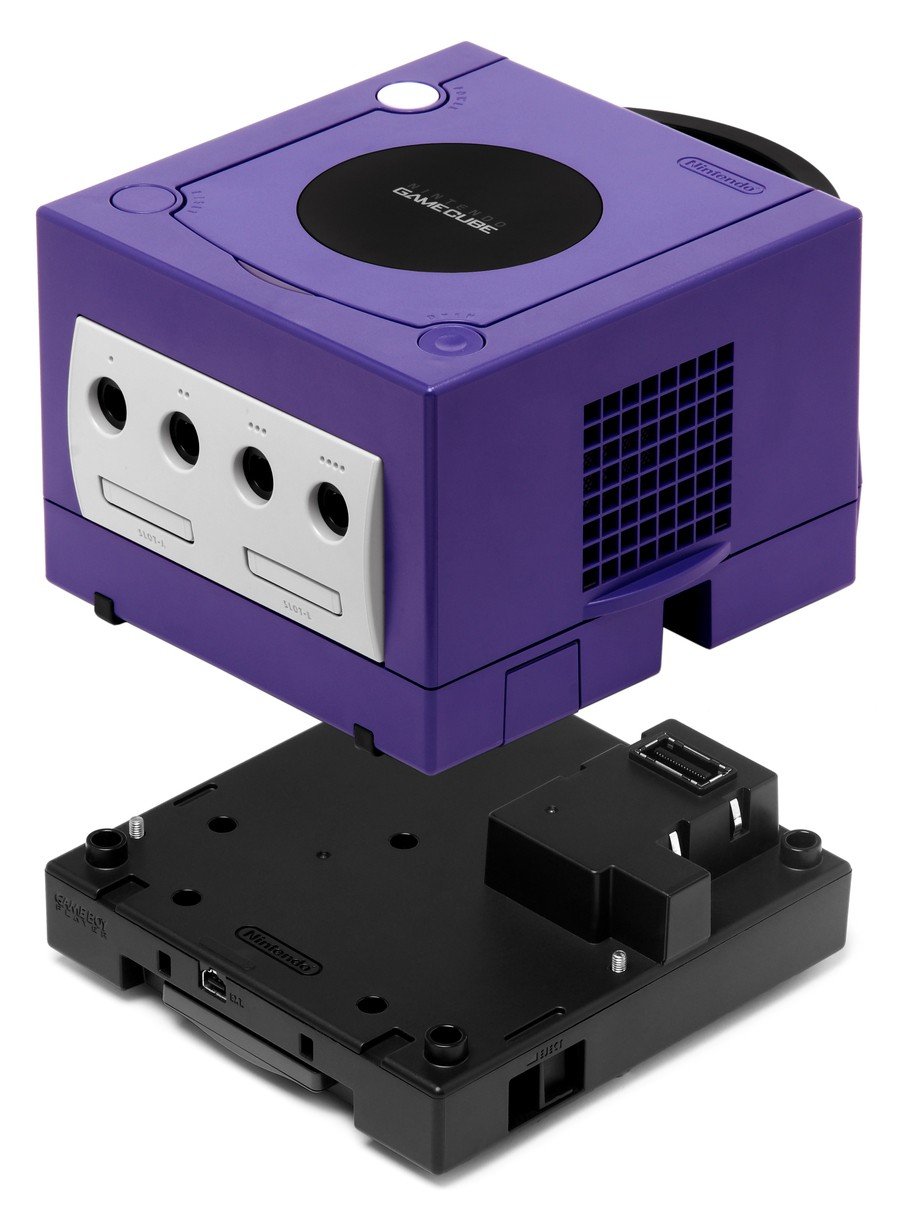
By comparison, the Game Boy Player’s ability to make GameCube controllers rumble when used with Mario & Luigi: Superstar Saga, Super Mario Advance 4, and Pokémon Pinball: Ruby & Sapphire (and more) felts a little less exciting, but no less welcome. Given the requisite hardware and copies of games, it was entirely possible to use link cables and play multiplayer titles on separate TVs.
This was a rare occurance due to the amount of kit and the sizeable investment required, but it was neat feature nonetheless.
Notable Super Game Boy and Game Boy Player games to consider:
Every Game Boy, Game Boy Color, and Game Boy Advance game you own — every last one of them! It’s like playing them for the first time all over again. Just don’t try to play the accelerometer-controlled Kirby Tilt ‘n’ Tumble cartridge using either add-on, for obvious reasons.
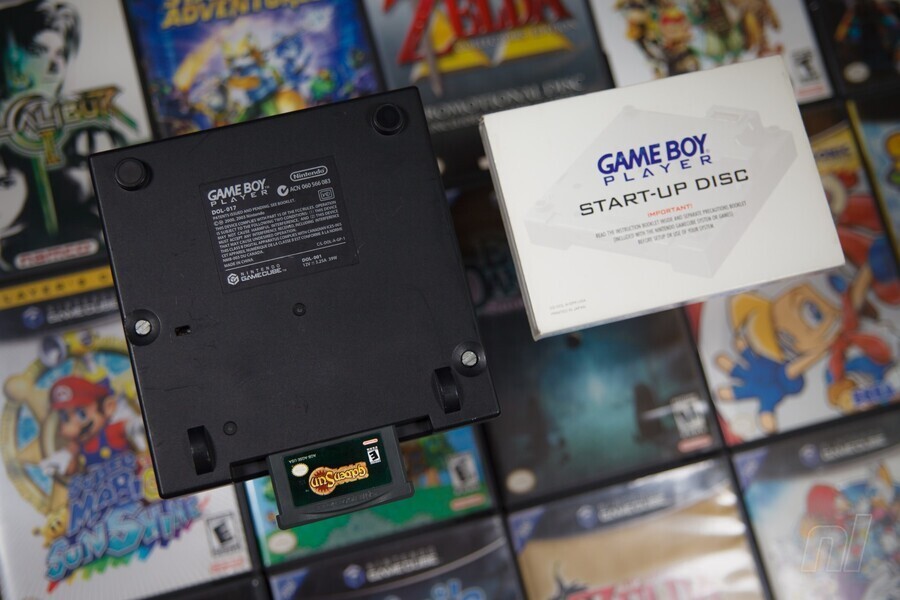
Do you own any of these add-ons or accessories — or any others? Do you wish you did? Let us know in the comments below!
Further reading:





Comments 44
There's no mention on the expansion pack for the N64, it was the only way to play Donkey Kong 64, Perfect Dark and Majora's Mask.
The Satellaview always interests me whenever I see it online, in a "this is early online gaming" kind of way. Similarly, my brother and I had Sega Channel on his Genesis. Early online stuff is just interesting to me.
I had the Super Game Boy, I still have my Game Boy Player. Not listed, I still have a GBA e-Reader with several NES and Animal Crossing cards.
I have a Super Game Boy and I have played Castlevania 2 Belmont's Revenge on it as well as Pokemon Red and Blue.
I love such accessories!!!
I have had the Gameboy Player since 2003. Excellent add on. I recently completed Metroid Fusion through it.
I remember as a kid my first device was the SEGA Game Gear and going round the shops with my dad to see if there was a way to plug it into the TV (other than just buying a Master System and those versions of the games of course). When I spotted the Gameboy Player in Toys r Us one day, having never heard of it before, it was an instant purchase (even as a skint student!)
Well, well, well, well, well. Lemme get a look at the menagerie.
The Gamecube/Gameboy (GBA) combo is glorious. So many amazing titles in those libraries.
Love the GBA player, i often boot it up and run through Metal Gear Solid, Mystic quest or one of the many many GBA games i bought over the years. I got the GCHD adapter so the Gamecube is nearly always hooked up.
On a side note, there's other peripherals i used to enjoy. We had the Nintendo Scope with our SNES, The mouse for Mario paint (what a great creative set of tools for it's era), The printer for the Gameboy and camera (nutty nutty Nintendo),the modem for Gamecube (for Phantasy Star and other shenanigans), The near Mandatory Expansion Pak for N64, The classic NES and SNES pads for Wii. Some good memories of add ons.
Edit: As a student i always wanted the Panasonic Q the Gamecube that could play DVD's. A modded unit was available from Liksang for £450, and i could never bring myself to actually make the purchase. One of my missed opportunities.
I had the Game Boy player for the GameCube. It was absolutely amazing playing my Game Boy games on there.
When I was a kid the Super Game Boy was my life! It came out at the perfect time too! I was obsessively playing whatever game I could get my hands on with my Game Boy (even the suckiest sucks of games that sucked!) and it was like the apex of my Game Boy playing life when I got the Super Game Boy! My handheld obsession now on the big screen! With color palette options, various screen frames and the ability to draw all over it? Gamer-gasm!!
I've got the super game boy and the game boy player.
I remember the wario ware spaghetti spinning mini game became miles easier with an analog stick!
About ten years ago, I used it to finally finish links awakening DX and just last year, I used it to play through Metal Gear Solid (ghost Babel internationally)
It’s worth mentioning that the Switch is the final representation of Nintendo’s portable vision that started with the Super Gameboy, namely the idea of being able to play portable games on the TV.
We had the Super Gameboy, the Transfer Pak, the Gameboy Player and the link cable and then the prototype Wii U.
The Switch is the amalgamation of 30 years of R&D in the area. If you look at the structure of big Switch games like BOTW and Mario Odyssey their underlying structure is also that of a bite-sized portable title yet perfectly playable on the TV for a few hours too.
The Gameboy Player also has the honour of actually turning the GameCube into an actual cube.
What about Doshin the giant?
I consider the Super Game Boy and Game Boy player as a big part of the reason why I love the Switch today. The ability to play the same games on the go or on the TV is something I really do love.
Super Game Boy was and is awesome, I still use it to play pokemon red and blue, robocop, Mario Land, Ninja Turtles etc etc etc. I loved the original Gameboy but trying to play it today is just a non-starter the screen just isn’t anyway near good enough today.
The Gameboy Player for game cube is just as awesome except I’d rather not have to put the boot disc in, just ruins the experience a bit having to put the disc in to boot the Gameboy player
Still disappointed they never made a 3DS Player for the Wii U. I firmly believe that would have been enough sell that system.
To this day I wish we got the 64DD.
As a child, I would look at the removable cover plate on the bottom of my NES, and wonder what it could be used for.
As an adult, I look at it with a jaded heart knowing that it could have been many things, but instead, it is for nothing.
(Wasn't there supposed to be a sewing machine hardware add-on at one point?)
I have the Gameboy Player, awesome add on.
I wish Nintendo was still in the add on game. Especially for the ds and 3ds lines. I had hoped when the WiiU launched that they were going to make a ds or 3ds attachment, but when sales tanked that became a pipe dream. I hate having so many of my favorite games locked on systems that I hate but them’s the breaks I guess.
Thing about the FDS added RAM: it doesn't necessarily improve the capabilities since disks had to load their data into it, whereas carts could be read directly.
It has some benefit, but it's a tradeoff.
Ahhhhh, Home Hardware add-ons... and they even come with an élite logo...
Still have my UK launch day Game Boy Player set.
@Desrever I think that was a joke they did
The Famicom was a hideous looking console.
I think that after SEGA's disastrous experience with peripherals with the Mega Drive/Genesis, Nintendo took a more "less is more" approach.
Anyway...
Here's hoping that someone writes an article about why the UK is considered, ahem... "Sonyland" ever since the PS1 made it big there. Sony reigns supreme in the UK up to the present day*
And yet for some Strange reason, some of the best websites (Nintendo Life) or YouTube channels (Switch Up) dedicated to Nitnendo are all from the UK.
Please someone from the site explain that mystery to me.
*Just saw the NPD numbers showing that the Switch dominated the US hardware and software charts. Beating the crap out of the PS5. And yet... and yet the opposite happens in the UK.
The Game Boy Player was amazing. It allowed my friends and I to have large-scale Advance Wars matches on one screen. Sure, we could see what each other were doing with our units all the time, but that didn't take away any of the fun. Playing the rest of my Game Boy Advance games on TV was a treat too...I guess it was the closest precursor to the Switch and the reason I adore it today.
After my parents got me a SNES years ago my uncle was kind enough to get me a Super Game Boy along with Mario Land; after that I was able to play games like Battletoads and Kirbys Dream Land on a big screen.
It felt game changing back in the day and will forever be a highlight in my gaming history.
I have the Gameboy Player for the GameCube, but didn't get a disc with it, so using the Gameboy Interface homebrew. Wario Land 4 is my favorite to play on the big screen. I also have an import Super Gameboy 2, and an original Super Gameboy modded with its own clock generator to get the correct speed. Donkey Kong with the custom border - and Super Mario Land - are probably my favourites to play this way.
I must confess I'm disappointed that the Game Boy Player didn't have the same features as Super Game Boy. I can't even remember if SGB-enhanced games kept their color schemes.
There were some interesting Zelda games for the Satellaview. There are dumps out there with recreations of the narration included. It's pretty neat!
Loved both the Super Game Boy & later the Game Boy Player.
No love for Xband? Or was this first party add-ons only?
@DrDaisy For full SGB compatibility, Nintendo would've had to essentially build an entire SNES emulator into it, as the SGB allowed Game Boy games to access the SNES hardware (the western Space Invaders is the most famous example, but it's also how single-console multiplayer were performed: games had to be specially coded to read the extra SNES controllers)
Everyone harps on SEGA for 32x and sega CD but Nintendo has 3 giant failures. The satellite view was the dumbest one. What stupid gimmick.
64DD is one of those add-ons that I would have loved to be successful and last longer. The idea of magnetic discs was interesting. Oh well.
I remember the Super Gameboy being a godsend. And those borders that also animated after a few minutes! Memories. Also saved me having to bug my parents to buy me a Gameboy system. Good times.
The GB Player... I was too young to see the value in being able to play GBA on the "big" screen which of course was just a 14" CRT with only composite in, but I digress back then it was more fun co-opping Fire Emblem because the 4 controller ports could control the games, than to play the same games I could on my SP, it felt like wasting time I could use for Melee or raising Chao or whatever.
I remember being puzzled at the dumb timer option, and the "screen filter" that changed nothing onscreen, it took me years to realize "smooth" made motion look disgusting. And "normal" added artifacts to a few games. I always had it set to the space wallpaper. The black border was also dumb because it kept certain graphics it just made things look bad, it was better to embrace a funky border.
I loved the Super Gameboy. I was quite late into GB games, getting a transparent model for Christmas, and then the Super Gameboy not too long later, secondhand. Similarly with the GB Player, I did lament the dark screen on the GBA so much and found the GB Player the ideal solution instead of buying one of the revised GBA models, like the SP. Mind you, I still should have bought one of those things anyway. I still lamented you had to deal with the tiny d-pad on the GC controller so I bought a SNES style third party d-pad for the GC to get around that. Yes, I still have all these accessories, complete!
PS: That third party d-pad was a Hori one.
The Gameboy player on the Gamecube is the best add on in history.
Change my mind.
@KingMike I know there were no borders, but what about the colors?
Probably they'd have to do the same hackish thing most GB emulators probably do and only support border+color SGB access commands. Could be trouble for games supporting either SGB or GBC (as no hardware was designed to use both enhancements simultaneously).
Power Glove, pistols...missing a lot of stuff here.
@Rohanrocks88 Yoshi's Safari was amazingly good fun. I always enjoy challenging myself by using the ScoreMaster arcade stick and use my feet to be player 2.
I have all the units mentioned including 4 Super GameBoy (Pal, US, Japanese and SGB2).
I have the super gameboy and the gamecube gba player which I bought at launch and I love them both. They still get used regularly.
Show Comments
Leave A Comment
Hold on there, you need to login to post a comment...